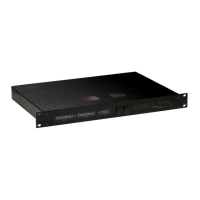
Do you have a question about the Telos Digital Hybrid Telephone Interface Telos 100 Delta and is the answer not in the manual?
| Telephone Interface | RJ-11 |
|---|---|
| Connectors | XLR, RJ-11 |
| Power | 12VDC |
| Type | Digital Hybrid |
| Model | 100 Delta |
| Category | Telephone Hybrid |
| Input Channels | 1 |
| Output Channels | 1 |
| Power Supply | External |
Provides a general overview of the Telos 100 Delta's purpose and features, detailing advanced DSP capabilities.
Explains the hardware design, its reliance on analog-to-digital converters, and overall structure.
Covers initial setup, physical placement, and audio connections.
Recommends rack mounting and avoiding interference sources for optimal placement.
Details input/output configurations, digital I/O provision, and signal flow.
Explains the concept of feeding mix-minus audio to the hybrid for proper operation.
Describes LINE/PHONE modular jacks, auto-answer capabilities, and line types.
Details the universal power supply, voltage operation, and fuse specifications.
Explains the DB9 connector for remote control functions and default operation modes.
Discusses software programmability, upgradability, and feature customization.
Explains the input/output level and gain reduction meters for monitoring.
Describes the function of the ON and OFF buttons for line seizure and call handling.
Details highpass filter, AGC, and pitch-shifter for optimizing send audio quality.
Covers lowpass filter, highpass filter, AGC, gate, and equalizer for receive audio.
Explains duplex depth settings and their impact on conversation flow and feedback.
Provides methods to prevent feedback issues in various scenarios like open speakers.
Explains how to set permanent operational modes and enter test states via utility mode.
Discusses the changing nature of broadcast engineering and troubleshooting philosophy.
Details the digital signal processing, processors, and A/D/A interface.
Explains the DSP processor and A/D/A interface workings.
Provides steps for diagnosing issues with the digital components and clocking.
Describes the audio circuitry, active hybrid function, and signal path.
Details the active hybrid function and signal path.
Offers guidance on diagnosing audio circuit problems using signal tracing.
Presents the circuit diagram for the digital processing board (DSP Board).
Shows the schematic for the analog audio circuitry (Analog Board).
Illustrates the layout and connections of the front panel components (Display Board).